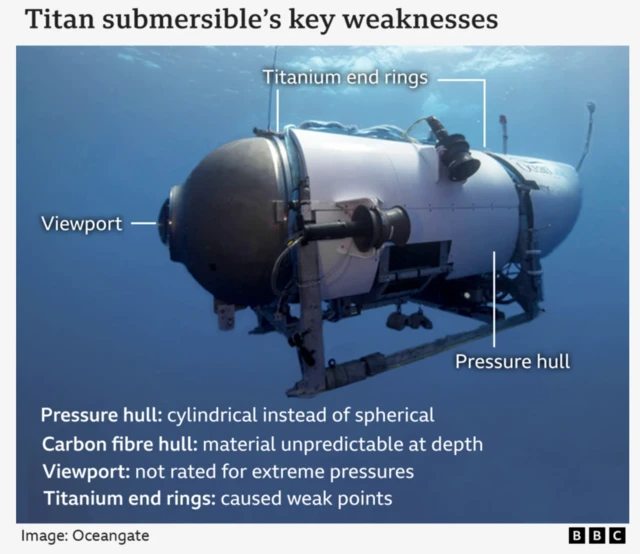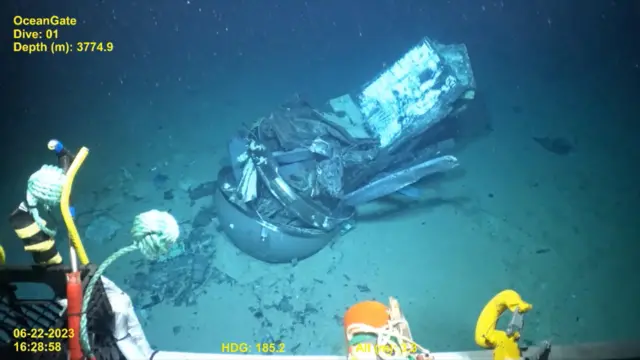Seven takeaways from Rojas's Titan testimonypublished at 17:20 BST 19 September 2024
They were happy to go, that's the memory I have - Titan sub mission specialist
Mission specialist Renata Rojas has finished giving her testimony to the hearing - let's quickly look back at the key takeaways from what she has said today:
- Rojas told the public hearing her role is a volunteer position and is someone who stands by until someone needs help
- She admits she was aware the Titan submersible was not classified or registered and that its nature was for exploring
- "I knew the Titanic dive was risky, but I never felt unsafe," she told the hearing at Charleston County Council, South Carolina
- Tearing up at one point during her testimony, Rojas recalled seeing "five people smiling" as she described their final moments before going into the Titan and disappearing below the water surface last year
- She described the rescue efforts and protocol detailing that the team went into "go mode" when the Titan did not return on its scheduled time
- Rojas likened the Titan to the famous Apollo space programme and in a final closing statement she said she hopes "innovation continues"
- "Without taking that risk and the exploration, the world would still be flat," she added


